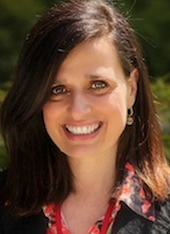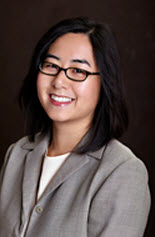Practice Makes Perfect in Applying for Federal Grants
Research educators at USC and the University of North Carolina partner to help scientists improve their chances of receiving federal support for clinical and translational research.
Applying to the National Institutes of Health (NIH) for grants is among the most challenging of hurdles for early-career biomedical researchers, but competition for limited federal dollars means that only the strongest proposals are funded.
To coach newer scientists in the art of grant writing, the Southern California Clinical and Translational Science Institute (SC CTSI) has teamed with their counterparts at the North Carolina Translational and Clinical Sciences Institute (NC TraCS) to conduct dress rehearsals of the government's rigorous proposal review process.
During these staged reviews, senior faculty scientists from both universities agree to play the role of NIH reviewers. Along with SC CTSI educators, the panel assesses research proposals before they are sent to the NIH, citing strengths and weaknesses and offering suggestions to improve the science and the written applications themselves.
The mock reviews go a long way toward preparing newer researchers for the scrutiny their ideas will receive during actual NIH review, said Morris Weinberger, PhD, Director of Education, Training and Career Development at NC TraCS, based at the University of North Carolina at Chapel Hill.
It is priceless to have access to a panel of senior scientists, Based on their ideas, I was able to improve my study design and make the grant a more cohesive package.
Kim Boggess, MD
"Newer researchers are not always prepared for the ups and downs of the review process," said Weinberger. "This approach helps desensitize them to the experience of being critiqued, as well as helping them prepare stronger proposals."
Mock grant review session at the North Carolina Translational and Clinical Sciences Institute (NC TraCS). From left to right: Kim Boggess, MD, program director for the UNC BIRCWH K12 program and member of NC TraCS Education Program leadership; Katie Reeder-Hayes, MD, K scholar; Mark Weaver, PhD, biostatistician in the Education Program; Laura Loehr, MD, PhD, epidemiologist in the Education Program, Morris Weinberger, director of Education, Training and Career Development at NC TraCS; Stacie Dusetzina, PhD, K scholar; Valerie Flax, PhD, K scholar.
Tapping the nation's scientific talent
Mock reviews are not a new concept in academia and have been going on within institutions like USC and UNC, in one form or another, for years. But after program directors at NC TraCS saw the positive response of a formal simulated review program, they sought partners at other institutions within the Clinical and Translational Science Awards (CTSA) consortium, the umbrella program for all 62 of the NIH's CTSA research support institutions. Program directors at the SC CTSI were eager to get involved.
"The great benefit of this model is that it gives our scholars the opportunity to get feedback from experts in their fields who can look at the proposals with a fresh and outside perspective," said Jonathan Samet, MD, MS, Director of the SC CTSI Education, Career Development, and Ethics program (ECDE). "That gives the researchers a better sense of how effectively they're communicating their ideas and plans."

Jonathan Samet, MD, MS
Partnerships such as the one between SC CTSI and NC TraCS don't only bring the benefits to more junior researchers, said educators. They also tap a larger pool of senior scientists to serve as experts.
"The types of science we cover in clinical and translational research has broadened, so we need a broader reach than just one institution," said Weinberger. "By drawing on other institutions within the CTSA programs around the country, we can capitalize on each other's unique areas of expertise."
Meeting face-to-face through videoconferencing
But NC TraCS had never conducted the mock reviews with participants who couldn't all sit in the same room together; the two institutions needed a way to bridge the geographical distance between California and North Carolina. Technology provided the answer, in the form of video conferencing technology.
"It was a bit of an unknown, but when we saw how well the video system worked, we showed that distance didn't really matter," said Susan Pusek, MS, MPH, Director of Education Programs at NC TraCS. "With the technology, the scholars and the experts can talk and interact as easily as if they're in the same room. That means we can partner with anyone."
Since SC CTSI and NC TraCS teamed up, two USC-based scholars have gone through the simulated reviews, with ten more junior faculty and post-doctoral fellows in line, said Cecilia Patino-Sutton, MD, MEd, PhD, Director of Education for SC CTSI ECDE. The collaboration was initially developed and implemented for the SC CTSI KL2 and TL1 training programs but soon will be available to the wider USC community of junior researchers interested in receiving this feedback - contact ecde@sc-ctsi.org.

Cecilia Patino-Sutton, MD, MEd, PhD
Streamlining a grant proposal
One of the first scholars from SC CTSI to go through a long-distance mock review was Mimi Kim, MD, assistant professor in the Center for Endocrinology, Diabetes and Metabolism at Children’s Hospital Los Angeles (CHLA) and the Keck School of Medicine of USC. During the review, the panel made several suggestions that she believes helped her streamline and strengthen her grant application.
"It is priceless to have access to a panel of senior scientists," said Kim. "Based on their ideas, I was able to improve my study design and make the grant a more cohesive package."

Mimi Kim, MD
When real proposals are submitted to NIH, reviewers assign what is called a priority score for funding. The actual decision of whether a proposal will be funded is based on the budget available and the priorities of the NIH institute. This means that even very good proposals do not get funded the first time and have to be resubmitted for the next funding cycle, five months later.
Some researchers, discouraged by repeated rejections, eventually withdraw from clinical and translational research. It's not an exaggeration to say that careers hang in the balance.
It usually takes an applicant at least two cycles to get funded, said Patino-Sutton.
With the help of the mock reviews, we think we can help our junior scholars cut that down to one cycle or less," she said. "It can make a big difference in someone's research and career."
Real NIH grant applications are submitted via email, and researchers wait for the official decision. The mock reviews, however, enable and encourage questions and brainstorming between reviewers and the reviewed. In fact, the program has evolved beyond the focus on any specific grant and has become a mechanism for support and collaboration.
"We've seen reviewers take a strong interest in the research and continue on as mentors or even research partners," said Pusek.
Equally important, the interest shown by leading thinkers in their proposals helps newer researchers maintain confidence and enthusiasm through difficult early years.
"Scholars have often told me that what impressed them most was that the reviews showed there was a team to support them, even as they had to submit and resubmit their proposals," said Pusek. "The success of the mock reviews is really a testament to the incredible commitment of the reviewers."
SC CTSI is part of the 62-member Clinical and Translational Science Awards (CTSA) network funded through the National Center for Advancing Translational Sciences (NCATS) at the NIH (Grant Number UL1TR000130). Under the mandate of “Translating Science into Solutions for Better Health,” SC CTSI provides a wide range of resources, services, funding, and education for researchers and promotes online collaboration tools such asUSC Profiles.



